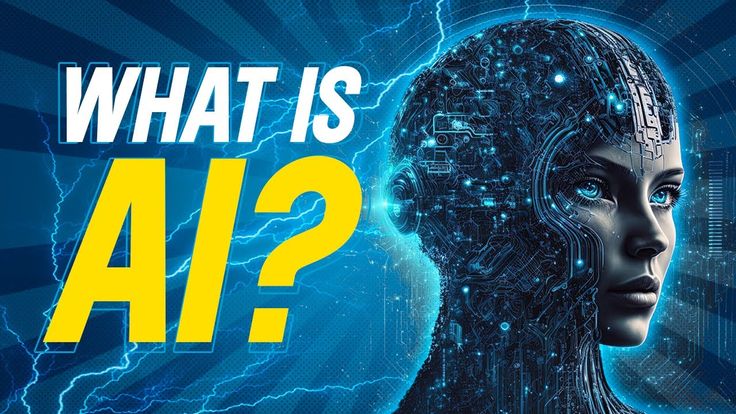Artificial Intelligence refers to the simulation of human intelligence in machines. These machines are programmed to think, learn, and make decisions just like humans. In simple words, AI enables computers and systems to perform tasks that normally require human intelligence.

The History of AI
AI isn’t as new as it seems. The concept goes back to the 1950s, when computer scientists like Alan Turing and John McCarthy began exploring the idea of machine intelligence. The term “Artificial Intelligence” was first coined in 1956. Over the years, with the rise of powerful computers and large datasets, AI has evolved from a science fiction dream to a real-world technology.
Types of Artificial Intelligence
AI is typically divided into three types:
1. Narrow AI (Weak AI)
Narrow AI is designed to perform a single task. It operates under a limited context and is the most common form of AI today.
Examples:
- Google Search
- Spam email filters
- Facial recognition on smartphones
2. General AI (Strong AI)
This type of AI can perform any intellectual task that a human can. It doesn’t exist yet but is a major goal of researchers.
Potential uses:
- Fully autonomous robots
- AI doctors or legal advisors
3. Super AI
Super AI refers to a future state where machines surpass human intelligence. It is still theoretical and raises questions about ethics, safety, and control.
How Does AI Work?
AI works by combining large amounts of data with fast algorithms and powerful computing systems. Here’s how the process usually works:
- Data Collection: AI systems learn from historical data.
- Pattern Recognition: AI identifies trends and relationships in the data.
- Learning Models: The system builds models (like decision trees or neural networks).
- Continuous Improvement: As more data is collected, the AI improves over time.
Key Technologies Behind AI
Several technologies contribute to AI’s functioning:
- Machine Learning (ML): A subset of AI that trains machines to learn from data.
- Natural Language Processing (NLP): Enables machines to understand human language.
- Computer Vision: Helps machines “see” and interpret images.
- Deep Learning: A more advanced form of ML that mimics the human brain’s neural networks.
Real-Life Examples of AI
AI is already a part of our everyday lives. Here are some areas where AI is used:
- Healthcare: AI diagnoses diseases from X-rays and helps in drug discovery.
- Finance: Fraud detection systems, trading bots, and customer support chatbots.
- Retail: Personalized shopping recommendations on Amazon or Netflix.
- Transportation: Self-driving cars like Tesla use AI for navigation.
- Education: AI-powered tools like language learning apps and virtual tutors.
Benefits of Artificial Intelligence
- Increases efficiency and productivity
- Reduces human error
- Enhances decision-making with data
- Automates repetitive tasks
- Enables new possibilities in science and medicine
Challenges and Risks of AI
- Job displacement due to automation
- Data privacy and security concerns
- Bias in algorithms
- Lack of human touch in sensitive areas like healthcare or education
- Ethical concerns about decision-making and control
The Future of AI
The future of AI looks promising and powerful. According to experts, AI will:
- Play a bigger role in decision-making in businesses
- Be integrated into smart cities and homes
- Improve customer experience with chatbots and AI agents
- Help solve global challenges like climate change, poverty, and education gaps
But with this growth, we must also build AI responsibly focusing on fairness, accountability, and human values.
Conclusion
Artificial Intelligence is not just a trend, it’s a transformational force that is reshaping the world. From basic assistants to complex medical tools, AI continues to evolve rapidly. For beginners, understanding the basics of AI is the first step toward becoming part of this future.
Whether you’re a student, a tech enthusiast, or someone curious about the digital world, now is the perfect time to learn about AI and its incredible potential.
